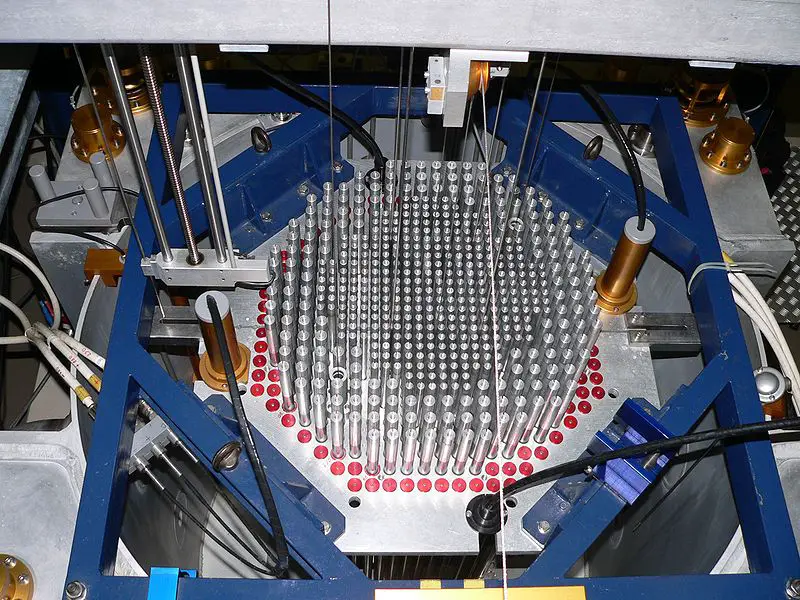
Reaction energy, also known as reaction enthalpy, refers to the energy change that occurs during a chemical or physical reaction.
Every chemical reaction involves the breaking of chemical bonds in the reactants and the formation of new bonds in the products. These changes in bonds are accompanied by a change in energy.
Reaction energy can be released (exothermic) or absorbed (endothermic) during the reaction.
Energy in exothermic reactions
In an exothermic reaction, the energy of the products is less than that of the reactants. This means that the reaction releases energy in the form of heat.
Example
A common example of an exothermic reaction is combustion. When we burn a piece of wood, for example, the energy released as heat causes the wood to burn and produce carbon dioxide and water as products.
Energy in endothermic reactions
On the other hand, endothermic reactions absorb energy from the environment and, therefore, the energy of the products is greater than that of the reactants.
Example
 An example of an endothermic reaction is photosynthesis in plants. During photosynthesis, plants absorb energy from sunlight to convert carbon dioxide and water into glucose and oxygen.
An example of an endothermic reaction is photosynthesis in plants. During photosynthesis, plants absorb energy from sunlight to convert carbon dioxide and water into glucose and oxygen.
Examples and applications of reaction energy
Reaction energy has a significant impact on our daily lives and many industries. Some notable examples include:
-
Power generation: Most of the world's power plants use exothermic reactions, such as the combustion of fossil fuels or nuclear fission, to generate electricity.
-
Chemical industry: Chemical synthesis, materials production, and pharmaceutical manufacturing rely heavily on chemical reactions that release or absorb energy.
-
Transportation: Internal combustion engines in automobiles and airplanes operate through exothermic reactions to propel vehicles and aircraft.
-
Cooking and eating: Cooking food, such as roasting meat or baking bread, involves exothermic reactions that improve the flavor and texture of the food.
-
Refrigeration and air conditioning: Air conditioning systems and heat pumps use endothermic reactions to cool or heat spaces.
Importance of reaction energy
The importance of reaction energy in physics and chemistry is significant and fundamental in both fields.
The reasons for its relevance in both disciplines are described below:
Importance in chemistry
Chemical thermodynamics
Chemical reactions are studied in terms of reaction enthalpy, which is the amount of energy transferred during a reaction.
This allows us to understand whether a reaction is exothermic (releases heat) or endothermic (absorbs heat), which has fundamental implications for chemical process design and reaction optimization.
Process design and synthesis of compounds
In the chemical industry, process optimization, compound synthesis, and chemical handling safety largely depend on understanding reaction energy.
This affects production efficiency, reactant selection, and reaction conditions.
Molecular stability and transformations
 The stability of molecules and chemical compounds, as well as molecular transformations, are related to the reaction energy.
The stability of molecules and chemical compounds, as well as molecular transformations, are related to the reaction energy.
Information about the reaction energy allows us to predict whether a molecule is stable or whether it can undergo chemical transformations.
Importance in physics
Thermodynamics
Reaction energy is essential for understanding concepts such as the first and second laws of thermodynamics, as well as the work, heat, and internal energy of physical systems.
Nuclear energy
In nuclear physics and nuclear energy, reaction energy is fundamental to understanding nuclear fission and fusion. These processes in which atoms split and fuse are crucial in the generation of energy in nuclear power plants and the understanding of stellar processes in the universe.
Particle dynamics and collisions
In particle physics and classical mechanics, reaction energy is used to calculate the kinetic and potential energies of particles before and after collisions and reactions.
The behavior of subatomic and macroscopic particles depends on this type of energy.
Terrestrial and atmospheric effects
Reaction energy is also relevant in the physics of the atmosphere and geophysical processes, as it helps explain phenomena such as the release of energy in earthquakes or the formation of storms.
Reaction energy in nuclear fission
 Nuclear fission is the process in which an atomic nucleus splits into two or more smaller nuclei, releasing a significant amount of energy in the process.
Nuclear fission is the process in which an atomic nucleus splits into two or more smaller nuclei, releasing a significant amount of energy in the process.
This released energy comes from the conversion of a small part of the mass of the nuclei involved into energy, according to Albert Einstein's famous equation, E=mc 2 .
When a heavy nucleus, such as uranium-235 or plutonium-239, undergoes a fission reaction, it is bombarded with neutrons that cause the nucleus to break apart into lighter fragments, usually nuclei of barium, krypton, and others.
The reaction energy in nuclear fission refers to the difference between the total energy of the fission products and the total energy of the reactants, which include the original nucleus and incident neutrons. This energy difference, which is equivalent to the mass loss in the process, is released mainly in the form of kinetic energy of the fission fragments and ejected neutrons, as well as in the form of gamma radiation.
Nuclear power plants and atomic bombs
This release of energy in a nuclear fission reaction is what makes it valuable for power generation in nuclear reactors, as it can be used to produce heat and generate electricity through water heating and steam production processes.
In addition, nuclear fission also has applications in the manufacture of nuclear weapons such as the atomic bomb.
Relationship with activation energy
Reaction energy and activation energy are intrinsically related in the context of chemical reactions.
Reaction energy refers to the net change in energy that occurs during a chemical reaction, that is, the difference between the energy of the products and the energy of the reactants. On the other hand, the activation energy is the minimum energy required for the chemical reaction to take place.
In essence, activation energy represents the energy barrier that reactants must overcome to become products. For a reaction to occur, the reactants must first acquire enough kinetic energy to overcome this barrier, allowing them to reach a transition state in which chemical bonds are broken and new bonds are formed.
Once the activation energy is exceeded, the reaction proceeds and releases or absorbs energy, which is reflected in the reaction energy.